The fun way to Learn how to Fight, Thrive, Play, and Care.
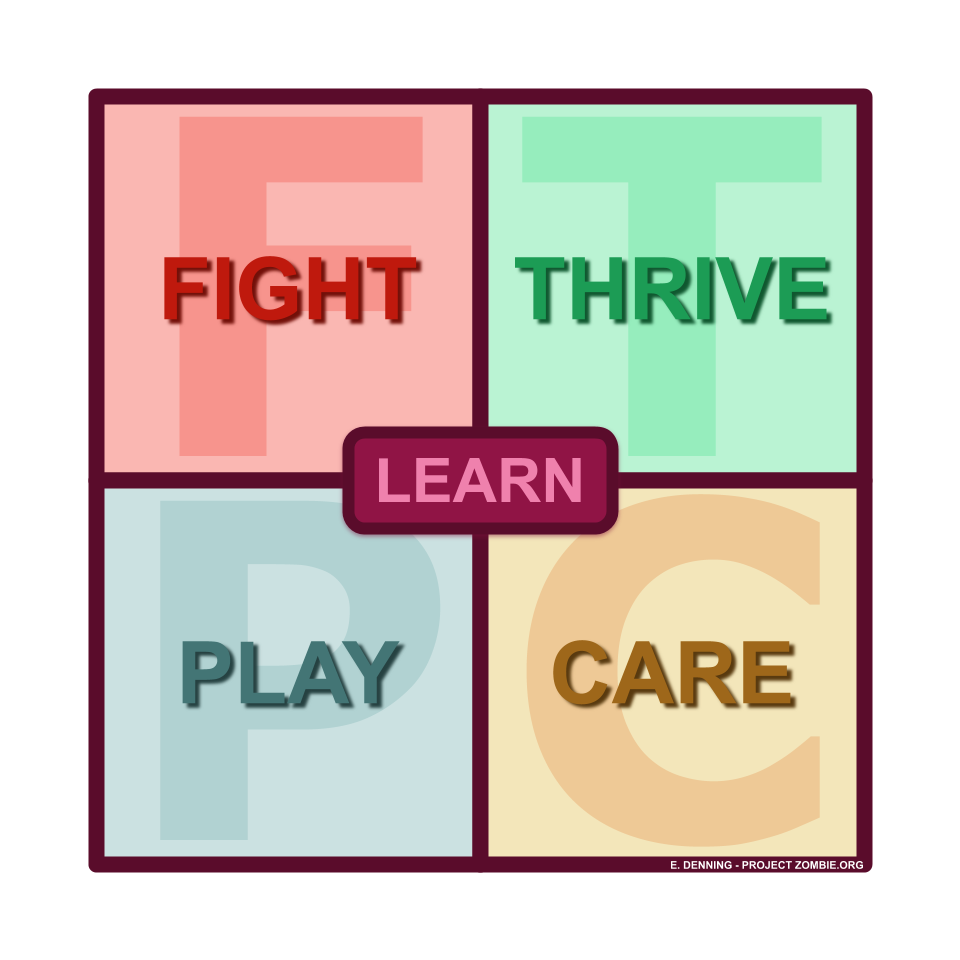
(Scroll to Bottom)
There’s a lot going on in the world, and a lot of it sucks. Especially right now, people are losing their jobs, getting sick, fighting for their lives, and dying. On top of that, our world is becoming uninhabitable. Our race threatens to become extinct, and death has become a terrifying fate with an excruciating lack of legacy.
That terror is paralyzing. It’s easy to resign oneself to defeat. It’s easy to prioritize oneself–to ignore the suffering of strangers in the very practical fear of sacrificing your own needs. I’ve been there. It’s hard to escape that learned helplessness. That’s why I’m here.
We are NOT helpless. We are POWERFUL.
Our battle to save our planet will be twofold:
- First Goal: We must acknowledge the severity of the climate crisis. We need to understand that action must be taken and that it’s a matter of life and death.
- Second Goal: We need to act upon that knowledge. We need to take the steps necessary to save our own lives and as much of our planet as possible.
In order to avoid the paralysis of fear, we must strive for both of these two goals simultaneously and constantly. We need to tend to our individual and societal mental health while also nurturing our individual and societal physical health.
Project Zombie was founded with those two principles in mind.
Under Project Zombie, we will face the emotional burden of our task without succumbing to the bleak reality of our fear. We will imbue our task with the encouraging element of fiction.
- Apocalypse: This is our Active Component to achieve our goal of Physical Doing.
Currently we already are living in a largely peaceful apocalypse under the weight of a fatal pandemic. We need look no farther than the news for examples of dire and tragic circumstances. Maybe we are privileged in some or many ways–this does not mean apocalypse does not exist for our fellow human beings in less happy circumstances.
Furthermore, even under the best of circumstances, apocalypse will exist in our future. Together, we have the power to dictate how extreme our future apocalypse will be. However, while we will dutifully aim for the best outcome, human nature suggests that we should simultaneously prepare for worse.
Under this component, we take actions that will best benefit us, both individually and as a society. We will learn the skills and gather the resources necessary to prevent the worst outcome first and to survive the worst outcome second.
- Zombies: This is our Passive Component to achieve our goal of Mental Wellbeing.
While zombies are extremely improbable, their success in pop culture implies that they will imbue our burdensome quest with an encouraging element of joy. I find great entertainment in my goals by embedding a fictional universe into the project, and it relaxes the tension, stress, and fear within me.
Zombies may not be of comfort to you specifically. In that case, I encourage you to envision your own ideal apocalypse scenario for this exercise. If apocalypse scenarios are generally a source of stress to you, then I further encourage you to find a different fictional setting that motivates you in a similar way. Maybe your Project Zombie will actually be called Project Mad Max… or Project Wilderness… Project Medieval… or Project Utopia.
The point is to play Make Believe in order to delight ourselves even while striving for tough goals. When we were young, our schools’ playgrounds could transform into battlegrounds and fantasies and feats of imagination. Hiking and camping could morph into hideouts from aliens and caveman adventures. Also significantly, we cared so deeply and so universally about our fellow human beings. Empathy and compassion were second nature to us.
This component is meant to capture the energy we likely had in our optimistic childhoods. This component is meant to infuse joy and fun and peace into our lives, even as we face daunting realities.
The Quadrant-Border Model
We must act as well as acknowledge, and we must tend as well as nurture. There are both active components and passive components. We have individual needs and societal needs, and we have mental health and physical health. How do we remember all of these goals and components? What brings all of our ambition together?
This brings us to the Quadrant-Border Model. While there are many similar models out there, I’ve rarely found merit in practicing any of them. Many offered only noun-based categories, which felt rather stationary and unmotivating. Some were too specific with categories such as “Spirituality,” which, as a non-theist Quaker, I found uninspiring. Finally, they were often broad categories that overlapped in unhelpful ways or required too much explanation.
In developing the Quadrant-Border Model, I wanted to do several things. I wanted my words to be active, short/punchy, and immediately understandable. I wanted them to be broad enough to capture any reasonable action but specific enough that any person using them wasn’t overwhelmed by the feeling of having a blank page. Finally I wanted to ensure that they were unified with an overarching goal that eliminated any unproductive overlap.
The Four Categories & Their Visible Border
Fight
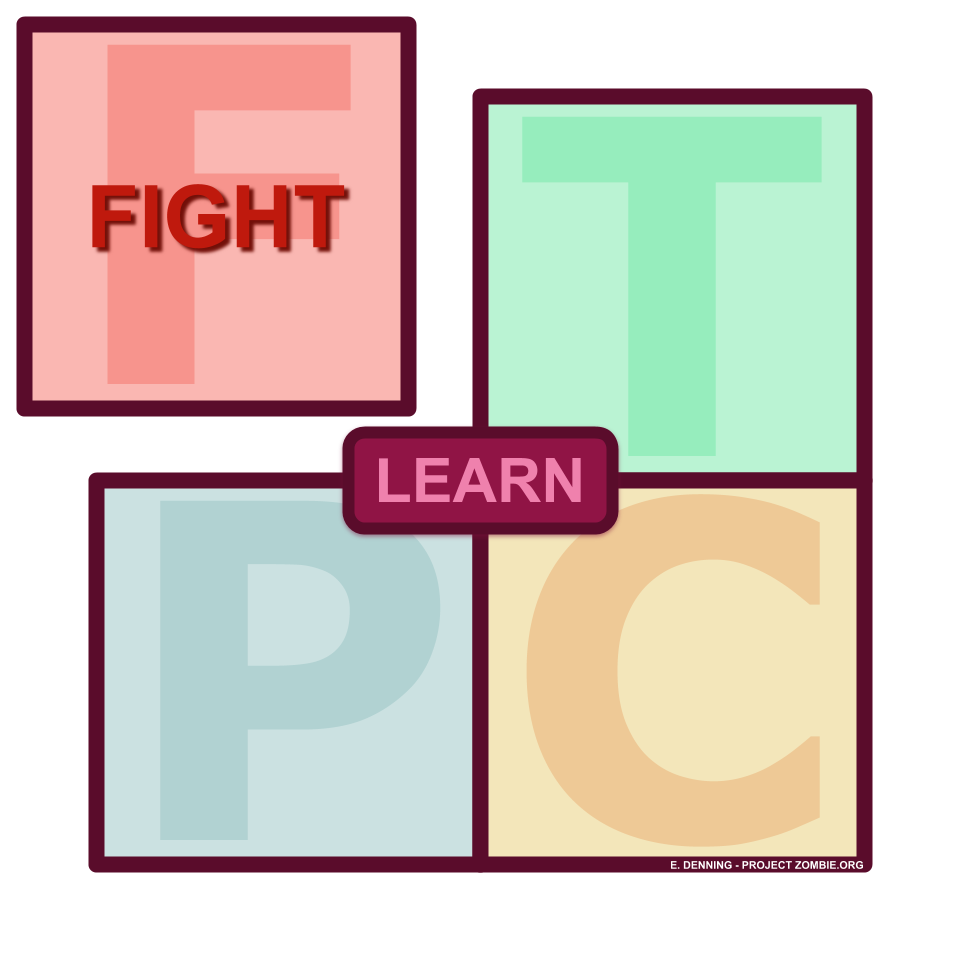
While learning how to fend for oneself in combat is a skill necessary to many unprivileged classes, the category of Fight does not end there. This category encompasses survival, strategy, stealth, and key apocalyptic skills. Do you know how to hotwire a car if you have to? Do you know how to purify water? How to treat wounds from rubber bullets, pepper spray, and tear gas? How to survive in extreme weather conditions? This is the category where you learn and practice these skills.
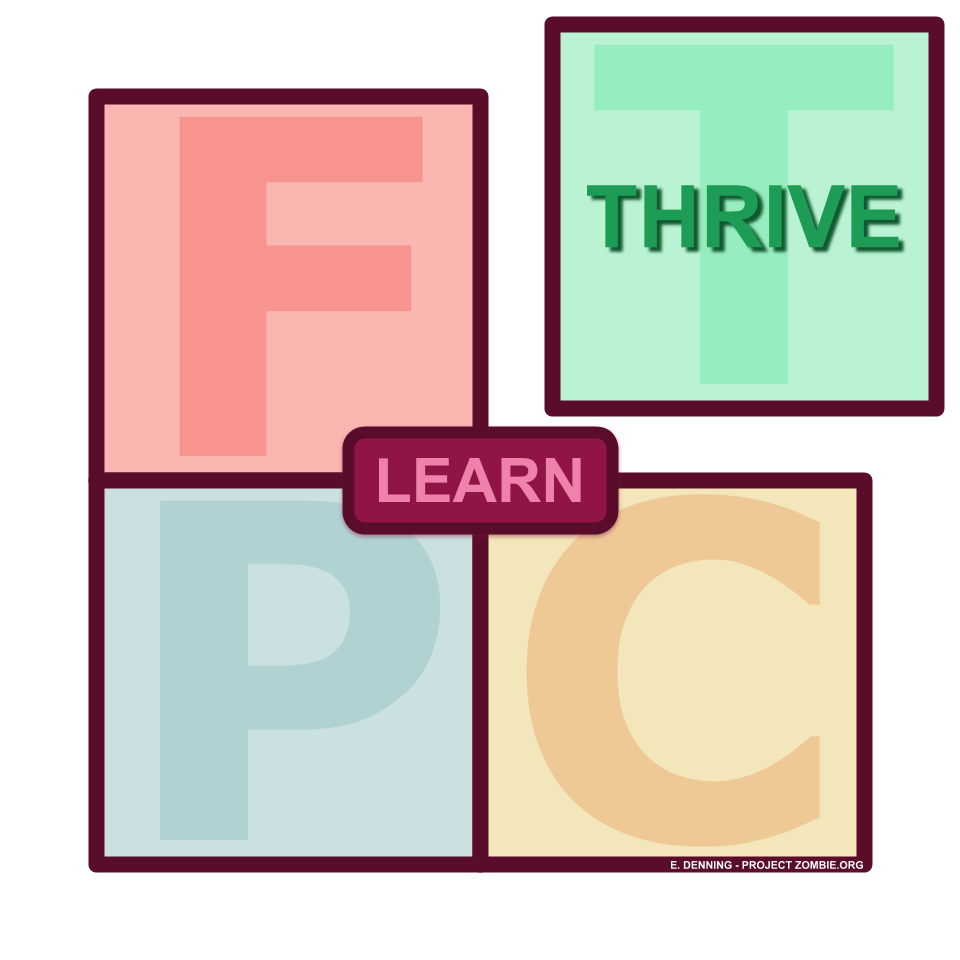
ThrivE
This is the core of repairing our environment and finding true sustainable living and fulfillment. It is also where we find our creative passions. This category includes growing, building, making, and creating. It also includes smart decision-making in terms of buying, recycling, and waste. While one’s goals under Thrive should be as eco-friendly as possible, it is not required. Perhaps you Thrive through caring for animals at an animal shelter or by working as a firefighter or forest ranger. In this category, we aim to return to nature with the thought of our community’s wellbeing in mind.
Play
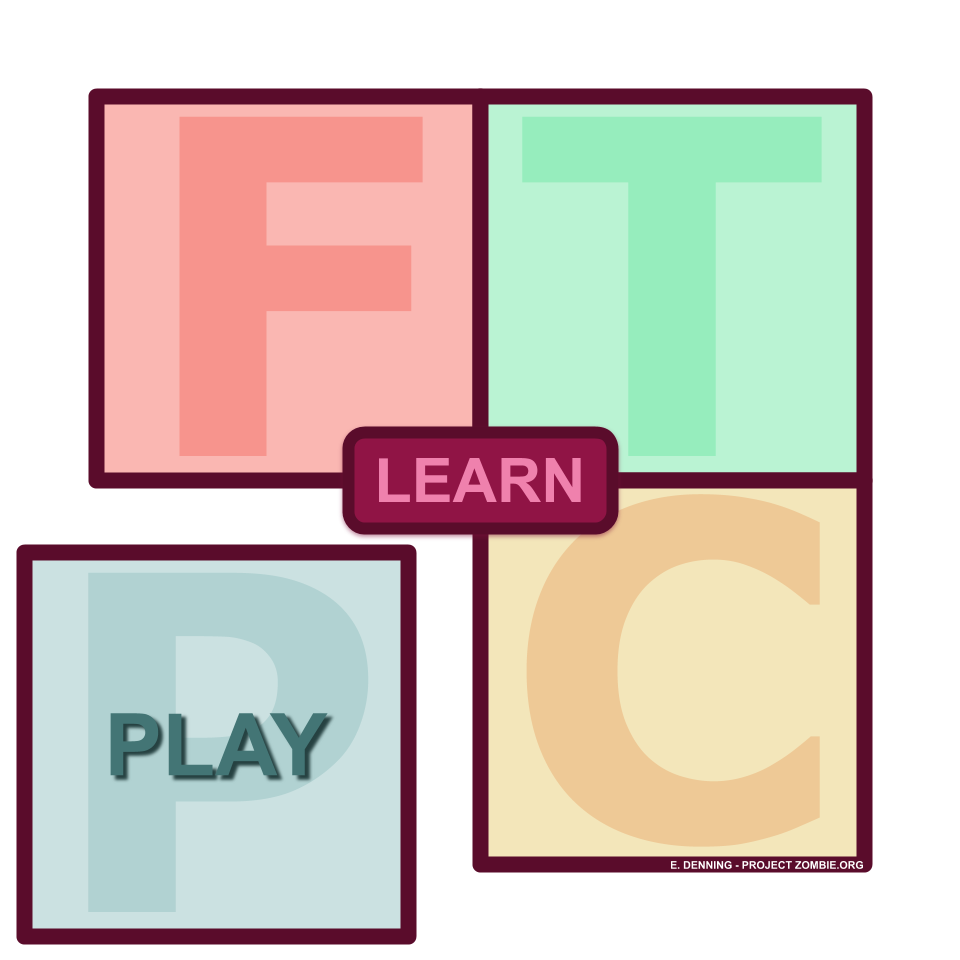
In order to act, we must first restore. A problem I found with many psychological models for goals was the lack of space for resting and relaxing. Play is a way of enforcing one’s attention to their own mental wellbeing. You cannot act at all times–you also have to recharge. Watching your favorite tv show, playing video or board games, spending time with friends at parties or at the bar, going on relaxing hikes, and any hobby you find soothing is a task under this category. Make time for yourself.
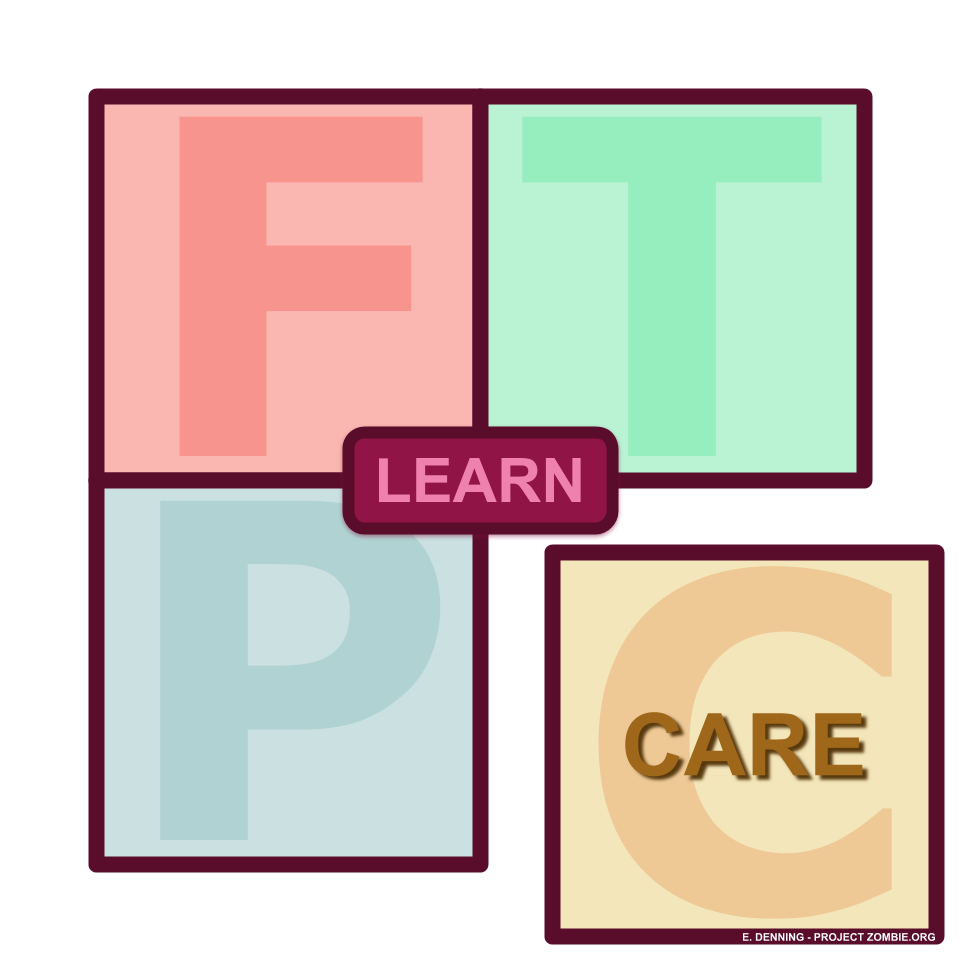
Care
Caring is all about our community. Perhaps we help our friends in need. Perhaps we attend religious gatherings. Perhaps we create neighborhood watch committees. However, the opportunities in this category are so much greater than what’s obvious. Tasks under this category can include donating, voting, protesting, and even campaigning. They can include writing fiction and nonfiction alike and even careers in counseling or psychology. They can include sharing your resources, be it money, food, or even knowledge. Anything you encourage to better your society, worldwide or next door, is an act of caring.
Learn
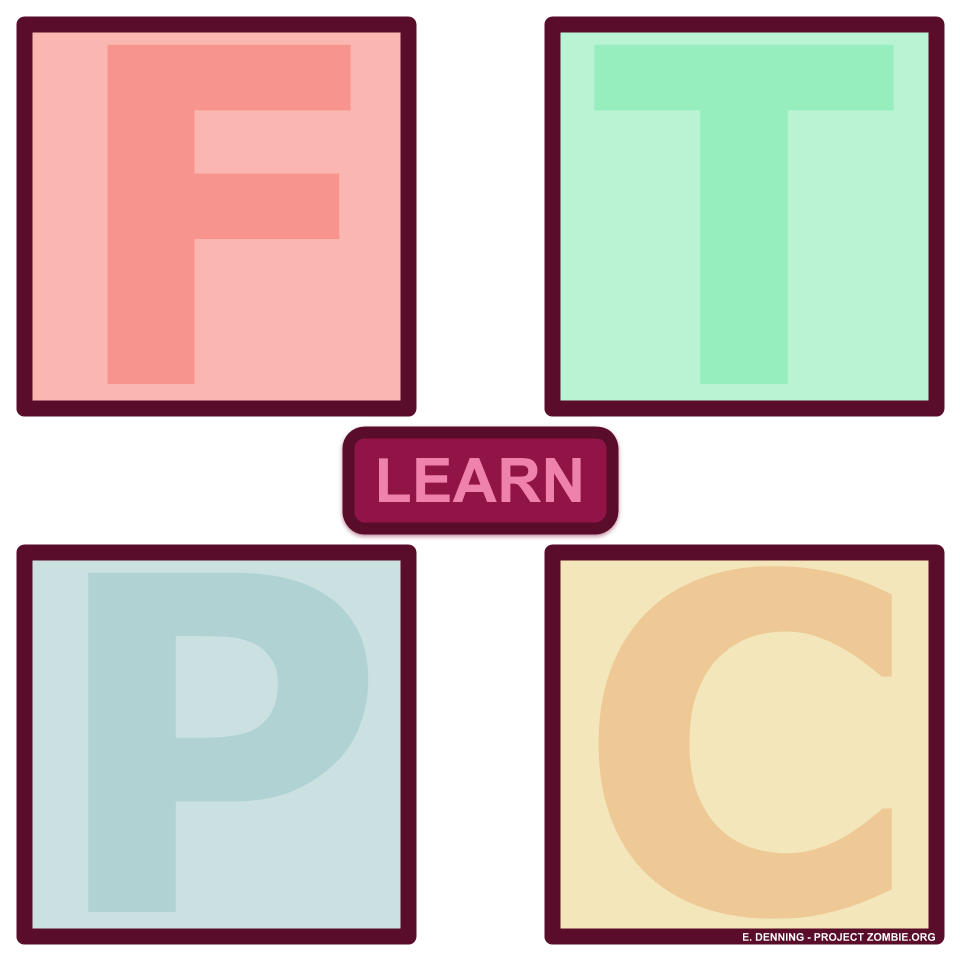
One of the most important parts to me with this model is the ability to allow learning rather than simply doing. None of us start perfect, and only through knowledge and practice can we begin to achieve the goals above. This is not one specific category, but rather the borders between each. It is necessary at all moments as we try to problem-solve the complicated issues before us. This blog will hopefully be an opportunity for all of your to engage in the border between the four categories, both to find ideas for what you can do going forward, knowledge to equip you in each category, and external resources and recommendations.